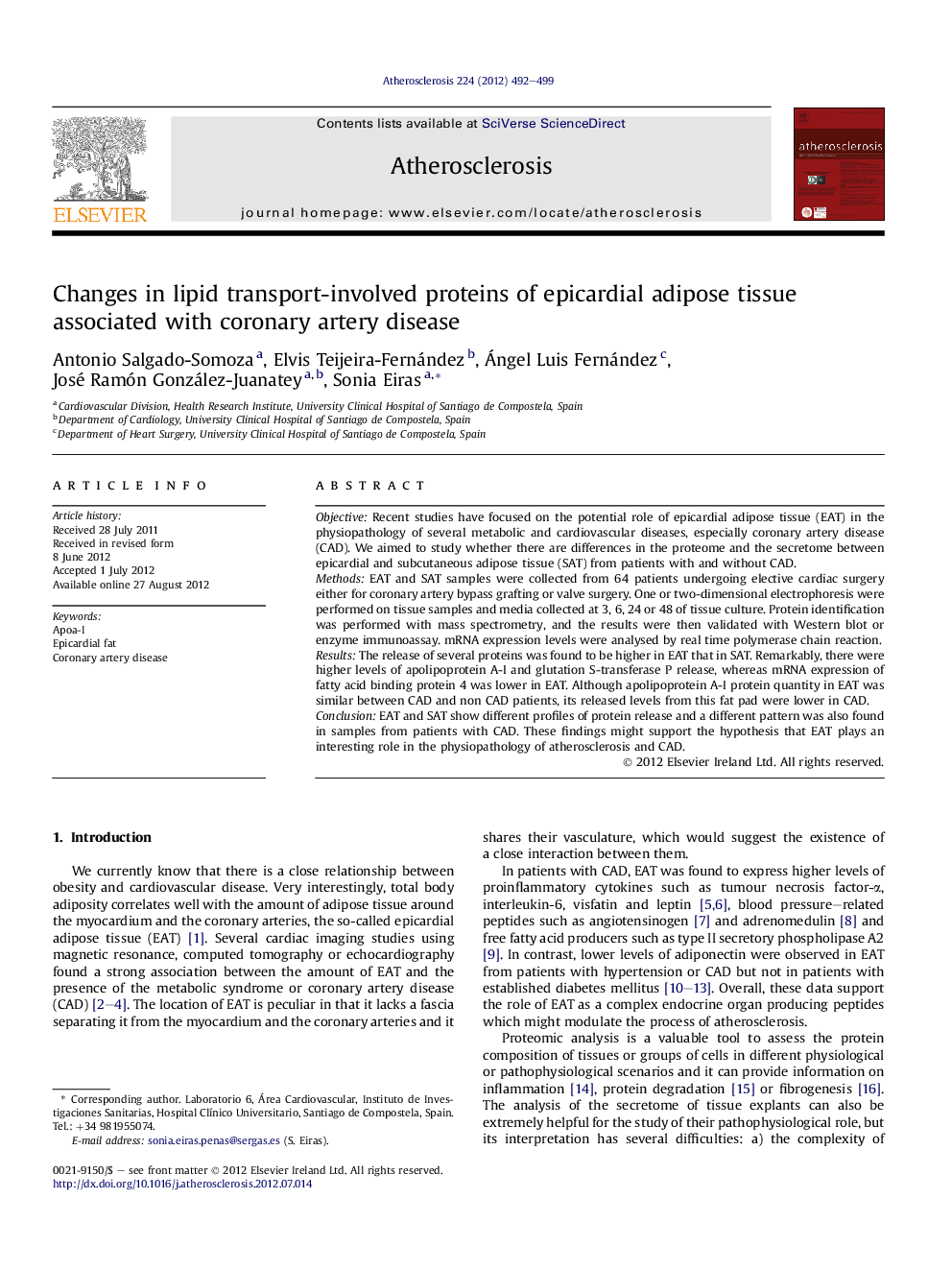| Article ID | Journal | Published Year | Pages | File Type |
|---|---|---|---|---|
| 5947241 | Atherosclerosis | 2012 | 8 Pages |
ObjectiveRecent studies have focused on the potential role of epicardial adipose tissue (EAT) in the physiopathology of several metabolic and cardiovascular diseases, especially coronary artery disease (CAD). We aimed to study whether there are differences in the proteome and the secretome between epicardial and subcutaneous adipose tissue (SAT) from patients with and without CAD.MethodsEAT and SAT samples were collected from 64 patients undergoing elective cardiac surgery either for coronary artery bypass grafting or valve surgery. One or two-dimensional electrophoresis were performed on tissue samples and media collected at 3, 6, 24 or 48 of tissue culture. Protein identification was performed with mass spectrometry, and the results were then validated with Western blot or enzyme immunoassay. mRNA expression levels were analysed by real time polymerase chain reaction.ResultsThe release of several proteins was found to be higher in EAT that in SAT. Remarkably, there were higher levels of apolipoprotein A-I and glutation S-transferase P release, whereas mRNA expression of fatty acid binding protein 4 was lower in EAT. Although apolipoprotein A-I protein quantity in EAT was similar between CAD and non CAD patients, its released levels from this fat pad were lower in CAD.ConclusionEAT and SAT show different profiles of protein release and a different pattern was also found in samples from patients with CAD. These findings might support the hypothesis that EAT plays an interesting role in the physiopathology of atherosclerosis and CAD.
⺠Differential secretome study of epicardial fat and subcutaneous fat. ⺠ApoA-I released levels in epicardial fat decrease in coronary artery disease. âºÂ Epicardial fat plays a role in coronary artery disease.
